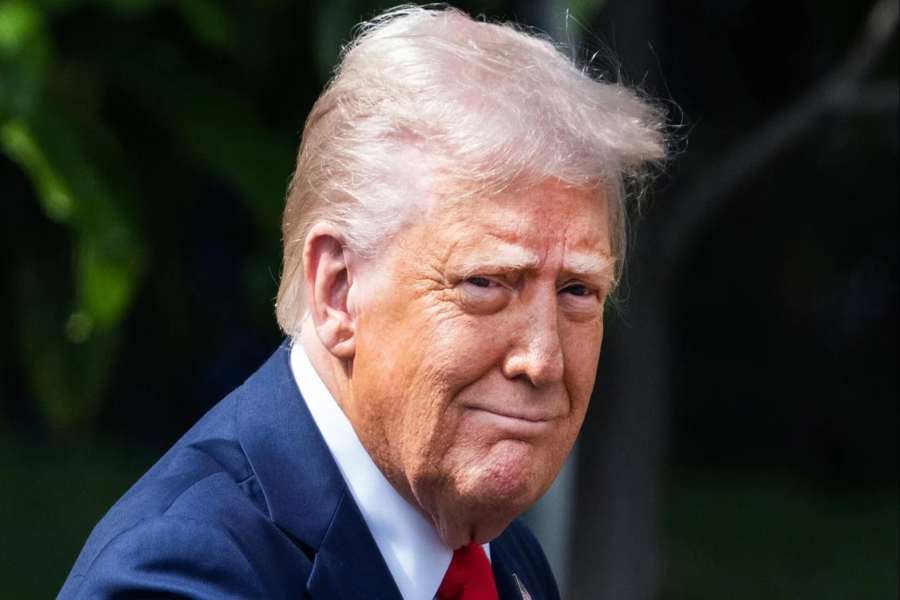Weeks before President Trump announced sweeping new tariffs on April 2 — a day the White House branded “Liberation Day” — senior members of his inner circle were already raising red flags. Behind the public message of unity, deep divisions had emerged among top advisers, with some warning that the tariff proposal could devastate global markets and send the U.S. economy into a tailspin.
According to multiple sources close to the administration, heated internal debates took place well before the announcement. The most intense of these reportedly happened in White House Chief of Staff Susie Wiles’ office, where Treasury Secretary Scott Bessent clashed with White House trade adviser Peter Navarro.
Navarro, a longtime supporter of hardline trade policies, was pushing for a blanket 25% tariff on all $3 trillion worth of imported goods. Bessent, a Wall Street veteran, cautioned that such a drastic move would spark market turmoil and potentially tip the economy into recession. The disagreement escalated quickly.
“You’re doing the same thing they did in the first term. Don’t pull this. Don’t be him,” Navarro reportedly snapped, referencing former Trump officials Steven Mnuchin and Gary Cohn, both of whom previously worked at Goldman Sachs and had resisted similar tariff measures. Navarro’s comment was interpreted by others in the room as a direct warning to Bessent not to repeat their moderate stance.
Navarro later denied any such argument, calling the report “fake news from malevolent anonymous sources” and insisting he and Bessent had no conflict. Still, other insiders confirmed there was real tension over the scope and speed of the proposed tariffs.
Commerce Secretary Howard Lutnick also raised concerns. In internal discussions, he reportedly predicted the tariffs would have “disastrous” consequences globally. Bessent continued to push for a more strategic, phased rollout targeting specific imports instead of a sweeping policy.
One notable absence from these internal battles was Elon Musk, who serves as the administration’s top adviser on government efficiency. While Musk wasn’t present during the key meetings, he was known to dislike the tariff policy and quietly voiced opposition in private circles. Eventually, he aired his frustrations publicly, taking subtle jabs at Navarro online and advocating for zero tariffs between the U.S. and European Union.
Despite the objections, Trump moved forward. On April 2, he announced the tariffs to great fanfare in the Rose Garden. But what was pitched as a patriotic economic reset quickly turned into financial chaos.
Markets tanked. Trillions of dollars were erased from major stock indexes. Bond yields plummeted, flashing classic signs of an economic downturn. Analysts at Goldman Sachs and other financial institutions began revising their forecasts, placing higher odds on a coming recession.
Business leaders went public with their dismay. JPMorgan Chase CEO Jamie Dimon told Fox Business that a recession was now “a likely outcome.” Delta Air Lines CEO Ed Bastian, speaking to CNBC, called the market shock “self-inflicted” and announced the airline would suspend its annual financial guidance due to what he called “uncharted, unprecedented uncertainty.”
In an effort to calm investors and the business community, Trump posted a message on social media: “BE COOL! Everything is going to work out well.” The post, intended to project confidence, did little to soothe Wall Street nerves.
Later that day, the White House began to walk things back. After pressure from Bessent and Lutnick, Trump agreed to pause some of the new tariffs for 90 days — a move designed to ease the immediate economic blow and allow time for further negotiation or adjustment.
“Well, I thought that people were jumping a little bit out of line,” Trump said afterward. “They were getting yippy—you know, they were getting a little bit yippy, a little bit afraid.”
The pause was a clear signal that the backlash had gotten through, at least in part. It also marked a rare moment where internal warnings managed to alter the trajectory of a Trump policy after it had already been announced.
Still, the president’s core stance remained unchanged. Navarro and other hardliners continued to insist that the tariffs were necessary to protect American industry and boost domestic production. In their view, the tariffs were a form of economic strength, not weakness.
Others, however, feared the short-term costs would far outweigh any long-term gains. Bessent and Lutnick reportedly began working on alternative proposals behind the scenes — frameworks that would still meet Trump’s objectives but avoid a full-scale market panic.
For now, the administration remains divided. With the 90-day pause in effect, lobbyists, businesses, and foreign trade partners are all racing to make their case. Whether the White House doubles down or pivots could depend on how markets and voters react in the weeks ahead.
What’s clear is that the “Liberation Day” tariffs did anything but unify the administration — and instead triggered a public reckoning of its internal economic fractures. If the turmoil continues, this may be remembered not as the start of an American manufacturing revival, but as the moment a policy gamble shook global confidence.


